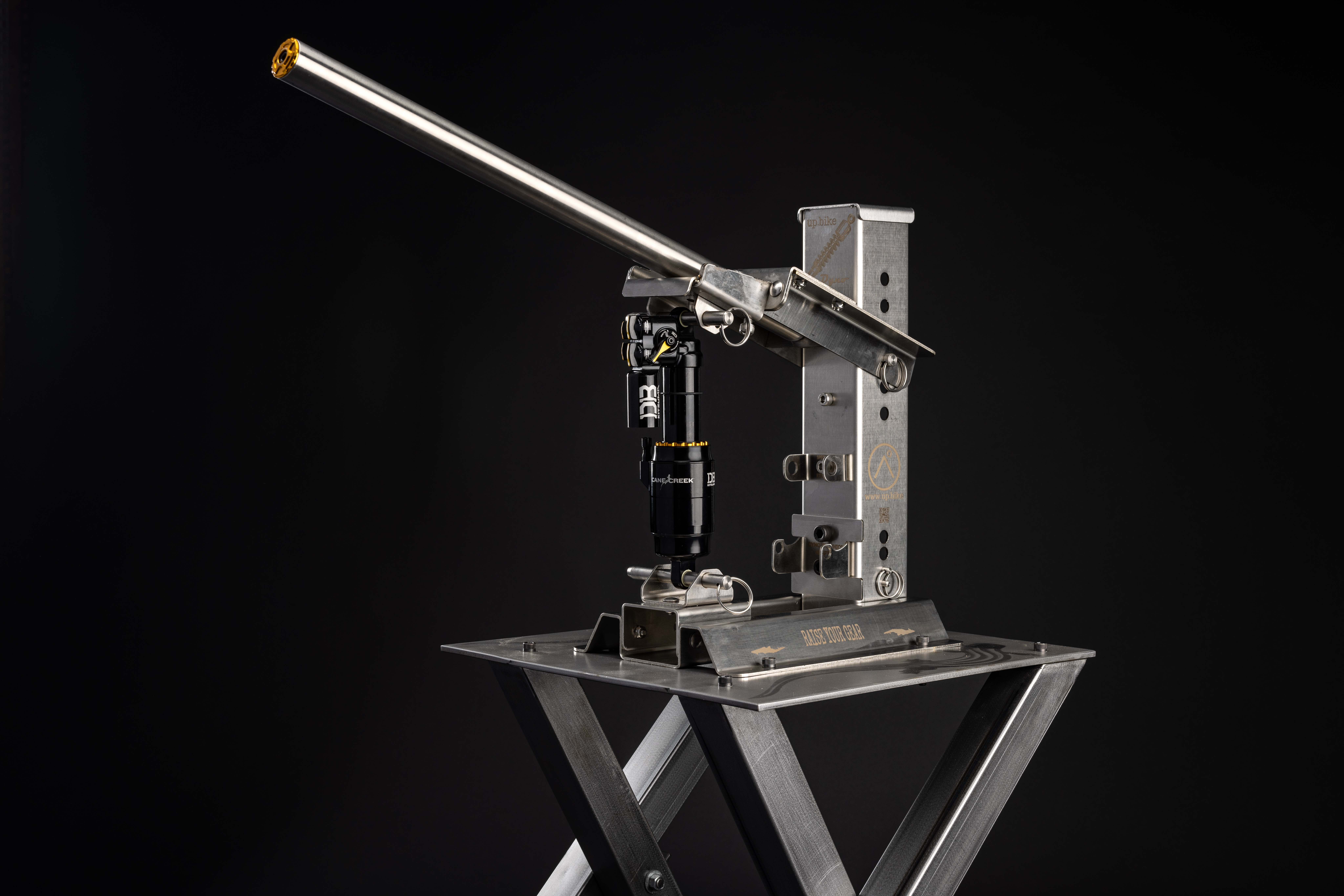

Other than making your workbench look Pro, do you need a Shock Dyno? Is it worth the investment? We at Up.bike set out to design a very high quality yet affordable Rear and Front Shock Dyno that gives greater access to the tools to make the all important shocks on your bike operate at their fullest potential. Travis dives in to the specifics on if a dyno is for you.
What is a dyno and why to invest in one for suspension service? - A shock dyno is a testing device used to check the operation of your shock.You can use the dyno to check for smooth operation, pressure leaks and loss, as well as rebound speed.It can also be used to compress shocks during rebuild for proper fluid filling.Using a manual dyno (dynamometer) for testing bicycle suspension before and after service offers several valuable advantages for both mechanics and riders. A manual dyno is a device that measures and quantifies various parameters related to suspension performance, helping to assess its condition, effectiveness, and improvements. Here is the value it brings:
Can you survive without one? - Absolutely. If you have the bicycle present, you can re-install the shock in the frame to compress it and check functions. Is that an efficient use of time? No. Just as you can gently rest a fork on the floor (hopefully without damaging the lowers or the rebound knobs if they protrude) and cycle it up to a moderate pressure.
Having one of these tools available is simply the most efficient way to check suspension health prior to and after service has been performed.
1. Assessment: Dyno testing provides an objective and data-driven assessment of the suspension's performance. Before and after service, this assessment can help mechanics identify issues and track improvements with concrete numbers and visualizations.
2. Baseline Measurement: Prior to servicing, dyno testing establishes a baseline measurement of the suspension's behavior. This baseline helps mechanics understand how the suspension is currently performing and whether any issues need to be addressed.
3. Issue Detection: Dyno testing can reveal issues such as reduced damping, inconsistent compression/rebound behavior, or excessive friction. These issues might not be readily apparent during visual inspection, but they can significantly impact the suspension's function and rider experience.
4. Verification of Service (Quality Control): After servicing the suspension, dyno testing allows mechanics to verify that the intended improvements were achieved. It's a way to confirm that the adjustments, repairs, or maintenance tasks successfully addressed the identified issues.
5. Client Education: Manual dyno testing can be used as a tool for educating riders about their suspension's behavior. Mechanics can share data and insights with riders, helping them understand how the suspension works and how adjustments impact its performance.
6. Quality Assurance (More Quality Control): For bike shops and manufacturers, using a dyno for before-and-after testing ensures a consistent level of quality in suspension servicing. It helps in maintaining standards and providing reliable services to customers. When re-pressurizing a shock / fork you also have the ability to cycle the shock at given pressure intervals to achieve balanced negative pressure.
7. Documentation: Dyno data can be documented and shared with riders as part of service records. This documentation can be helpful for future reference and comparisons between different service sessions - on a manual dyno this is tactile feel, on an electronic dyno there will be measurable data. The takeaway on a manual dyno is generally measuring compression while locked out (if present), function of a platform feature (if present) and function of rebound.
8. Problem Prevention: Regular dyno testing can help detect issues before they become major problems. Identifying and addressing minor issues early on can prevent more significant and costly failures down the line.
9. Customer Satisfaction: Offering dyno testing as part of the service package can enhance customer satisfaction. Riders appreciate the transparency, expertise, and evidence-based approach to suspension maintenance and improvement.
To wrap it all up, using a manual dyno for testing bicycle suspension before and after service provides an objective, data-driven approach to assessing, diagnosing, and improving suspension performance. It enhances the mechanic's ability to detect and address issues, provides riders with quantifiable improvements, and contributes to a higher level of quality assurance and customer satisfaction.
Cheers,
T-
Travis Cole
Anvil Bicycle Company
6128 Forest Ridge LN.
Harbor Springs, MI. 49740www.anvilbicycleco.com
Email: travis@anvilbicycleco.com
Phone / text: (231) 675-1030

